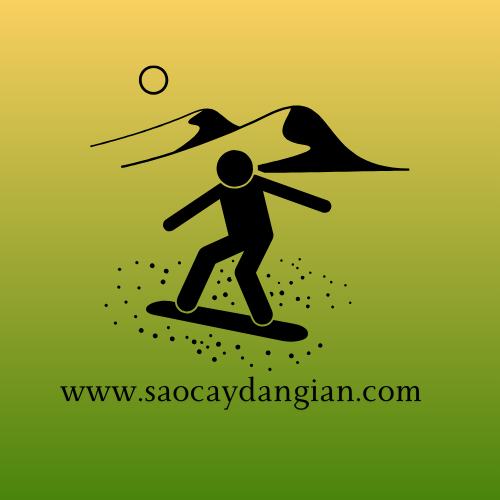
“This article will share the most effective tips on how to handle falls while sandboarding, helping you confidently participate in sandboarding activities without fear of accidents.”
Why do we need to know what to do if we fall while sandboarding?
When we participate in outdoor activities such as sandboarding, the risk of falling and having an accident is very high. Knowing how to handle a fall while sandboarding not only helps us protect ourselves but can also help others in an emergency. In particular, timely and proper first aid can minimize the risk of serious injury and help the victim recover quickly.
Benefits of knowing how to handle a fall while sandboarding:
- Minimize the risk of serious injury
- Enhance first aid skills in emergency situations
- Help yourself and others feel safe and confident when participating in outdoor activities
Understanding how to handle a fall while sandboarding is not only useful knowledge but also an important skill that helps us maintain safety and health in outdoor environments.
How to choose a location and how to jump sandboarding to reduce the risk of falling

Before starting a sand jumping activity, choosing the right location is important to reduce the risk of falling. First, choose a flat sandy beach with no rocks or other obstacles to avoid the risk of tripping and falling. Additionally, choose an area with a slight slope for safe and easy sandboarding.
How to jump sandboarding properly
1. Make sure you have prepared enough protective equipment such as helmets, gloves and body armor if necessary.
2. Standing at the top of the ramp, jump up and place your feet on the sand in a gentle and controlled manner.
3. To slow down, use the technique of bringing your knees close together to create friction with the sand.
4. When you reach the end of the slope, gently bring your body up to a safe stop.
The above techniques will help you sandboard safely and reduce the risk of falling. Remember to always follow safety rules when doing this activity.
The right way to prevent and minimize injuries from falls while sandboarding
When you fall while sandboarding, there are a few things you can do to prevent and minimize injury:
1. Assess the victim's condition
– Check the victim's vital signs by asking questions and observing their reactions.
– If the victim does not respond, call emergency services immediately.
– If the victim responds, examine the injured area and determine the extent of the injury.
2. Do not move the victim
– Avoid moving the victim immediately so as not to increase the risk of serious injury.
– If necessary, call others to help the victim.
3. Stop bleeding and immobilize the injured area
– Use wound dressings and control bleeding by covering the wound.
– Immobilize the injured area using a splint or compression bandage to reduce movement and pain for the victim.
Remember, using first aid techniques properly not only helps minimize injuries but can also save the victim's life.
Skills needed to deal with falling while sandboarding
When you fall while sandboarding, mastering basic first aid skills is important to minimize the risk of further injury and assist the victim in recovering quickly. Here are some skills needed to deal with falls while sandboarding:
Assess the victim's condition
– Check the victim's vital signs by asking questions.
– If the victim does not respond, they may have suffered mental damage or cervical spine injury.
Avoid moving the victim
– Do not move the injured person immediately because this can dislodge the fracture and put more pressure on the spinal cord, leading to the risk of permanent paralysis or other serious complications.
Call emergency
– Immediately call the emergency number (115) to request medical assistance.
These skills will help prepare you to respond effectively to a fall while sandboarding.
The secret to getting up and continuing to sandboard after falling
After falling while sandboarding, getting up and continuing to slide should be done carefully to avoid injury and the risk of recurrence. Below are some important tips you can take after an accident.
Assess your own condition
First, check your body to make sure there are no serious injuries. If you feel pain or cannot move normally, seek medical help immediately.
- Check for wounds, bruises or broken bones.
- Assess your body's ability to move and consider whether you need help from others.
Stand up carefully
Once you have assessed your condition and are ready to stand, take the following steps to avoid further injury:
- Get up one step at a time, not quickly or suddenly.
- Use your arms and legs to stabilize your body when standing up.
- If necessary, ask others for help to get up safely.
By following these steps, you can get up and continue sandboarding safely after a fall. However, if you feel pain or are unsure about your condition, seek medical help immediately.
Things to remember and lessons learned after every fall while sandboarding
Things to remember
– Always check your condition after each fall to ensure there is no serious injury.
– Use basic first aid techniques when necessary to minimize the risk of injury and aid recovery.
– Master important first aid steps to be prepared to respond in an emergency.
Lesson learned
– From each fall, learn to be more careful in daily activities to avoid accidents.
– At least every fall is an opportunity to learn and improve first aid and injury prevention skills.
– Don't underestimate the risk of falls, always be careful and prepared for every situation.
When sandboarding, stay calm and try to use your hands and feet for balance. If there is damage, it needs to be checked and treated promptly to avoid a more serious situation.



